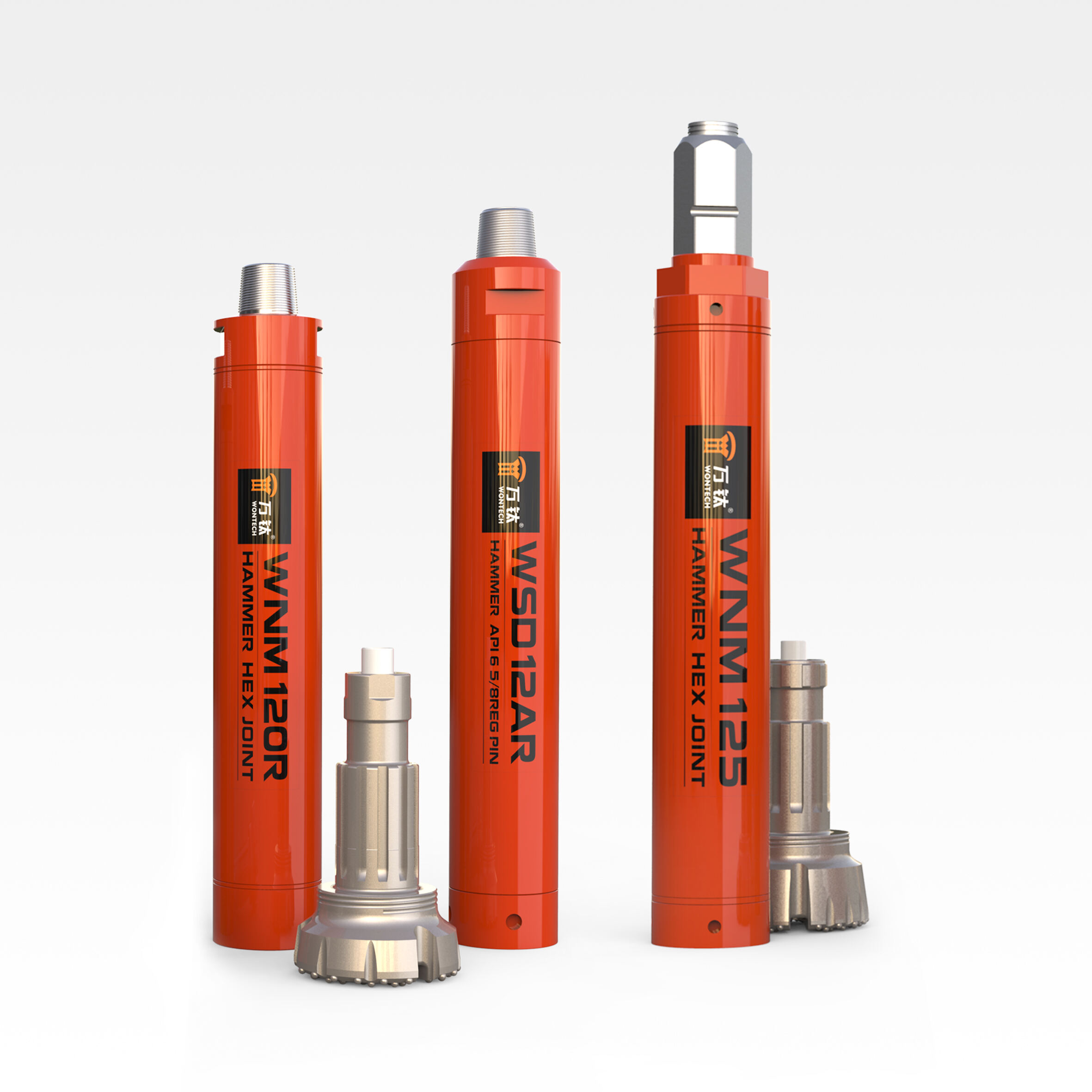Understanding Modern DTH Hammer Bit Technology
Down-the-hole (DTH) hammer bit technology has revolutionized drilling operations across multiple industries, from mining to construction and water well development. As we approach 2025, these essential tools continue to evolve, offering unprecedented levels of efficiency and durability. A dth hammer bit combines percussion and rotation to deliver powerful impact force directly to the rock face, making it an indispensable tool for challenging drilling projects.
The latest advancements in metallurgy and design have transformed how these bits perform in varied geological conditions. Modern dth hammer bit solutions incorporate sophisticated button patterns, enhanced flushing capabilities, and wear-resistant materials that significantly extend operational life while maintaining optimal penetration rates.
Essential Components and Design Features
Button Configuration and Patterns
The success of any dth hammer bit largely depends on its button configuration. Modern designs typically feature tungsten carbide buttons arranged in specific patterns to maximize drilling efficiency. Face buttons handle the primary rock crushing, while gauge buttons maintain the hole diameter and protect the bit body from excessive wear.
Advanced button configurations now include variable button sizes and positioning that optimize rock fragmentation while reducing stress on the bit structure. This thoughtful design approach ensures consistent performance even in challenging formations while extending the service life of the dth hammer bit.
Flushing Systems and Air Flow Design
Effective debris removal is crucial for maintaining drilling efficiency. Modern dth hammer bit designs incorporate sophisticated flushing channels that ensure optimal air or fluid flow. These channels are precisely engineered to prevent clogging while maintaining adequate cooling of the bit face during operation.
The latest innovations include enhanced flushing patterns that improve hole cleaning efficiency while reducing air consumption. This optimization not only increases penetration rates but also contributes to overall operational cost savings.

Selecting the Right DTH Hammer Bit for Your Project
Formation Considerations
Choosing the appropriate dth hammer bit starts with a thorough understanding of the ground conditions. Soft, medium, or hard rock formations each require specific bit characteristics to achieve optimal performance. Bits designed for soft formations typically feature wider button spacing and larger air channels, while those for hard rock incorporate more buttons with specialized hardness ratings.
Modern geological mapping technologies now allow for more precise formation analysis, enabling operators to select the most suitable dth hammer bit configuration for specific project requirements. This targeted approach significantly reduces downtime and improves overall drilling efficiency.
Operating Parameters and Performance Metrics
Success in DTH drilling operations depends heavily on matching the bit specifications with the hammer's operating parameters. Key considerations include air pressure requirements, rotation speed, and feed force. The latest generation of dth hammer bit designs accounts for these variables with sophisticated engineering that optimizes performance across a broader range of operating conditions.
Performance monitoring systems now provide real-time data on bit wear, penetration rates, and operating conditions, allowing operators to make informed decisions about bit replacement and maintenance schedules.
Maintenance and Performance Optimization
Wear Pattern Analysis
Regular inspection of dth hammer bit wear patterns provides valuable insights into operational efficiency and potential areas for improvement. Understanding how different formations affect button wear helps in developing more effective drilling strategies and maintenance schedules.
Modern wear monitoring techniques, including digital imaging and 3D scanning, enable precise tracking of button and body wear, helping operators maximize bit life while maintaining optimal drilling performance.
Preventive Maintenance Strategies
Implementing a comprehensive maintenance program is crucial for extending dth hammer bit life and maintaining consistent performance. Regular button inspection, rotation measurement, and flushing system cleaning help prevent catastrophic failures and ensure reliable operation.
Advanced maintenance protocols now incorporate predictive analytics to anticipate potential issues before they impact drilling operations, significantly reducing unexpected downtime and replacement costs.
Future Trends and Innovations
Advanced Materials and Manufacturing
The future of dth hammer bit technology lies in the development of new materials and manufacturing processes. Emerging technologies like additive manufacturing and novel carbide formulations promise to deliver bits with enhanced durability and performance characteristics.
Research into surface treatments and coating technologies continues to push the boundaries of what's possible in terms of wear resistance and impact strength, leading to longer-lasting and more efficient drilling solutions.
Smart Technology Integration
The integration of smart sensors and monitoring systems into dth hammer bit design represents the next frontier in drilling technology. These innovations will enable real-time performance optimization and predictive maintenance capabilities, fundamentally changing how drilling operations are managed.
Future developments may include self-adjusting bits that can modify their operating characteristics based on formation changes, further improving drilling efficiency and reducing operator intervention requirements.
Frequently Asked Questions
How long does a DTH hammer bit typically last?
The lifespan of a dth hammer bit varies significantly depending on formation characteristics, operating conditions, and maintenance practices. In optimal conditions, modern bits can last anywhere from 3,000 to 20,000 meters of drilling, though this range can vary based on specific applications and rock hardness.
What are the key indicators that a DTH hammer bit needs replacement?
Major indicators include decreased penetration rates, excessive vibration, irregular wear patterns on buttons, cracked or broken buttons, and visible damage to the bit body or flushing channels. Regular monitoring of these factors helps determine the optimal replacement timing.
How can I maximize the service life of my DTH hammer bit?
To optimize bit life, maintain proper operating parameters, ensure adequate air supply and pressure, regularly inspect for wear, implement proper rotation speeds, and avoid excessive feed pressure. Additionally, following manufacturer-recommended maintenance schedules and proper storage practices will help extend service life.

